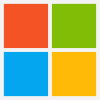Microsoft HealthVault
|
| |
|
Screenshot  Microsoft HealthVault website | |
| Developer(s) | Microsoft |
|---|---|
| Type | Medical database |
| Website |
www |
Microsoft HealthVault is a web-based personal health record created by Microsoft, in October 2007, to store and maintain health and fitness information.[1][2][3][4] This website addresses both individuals and healthcare professionals, and in June 2010 expanded its services beyond the United States to include the United Kingdom.[5]
Components
A HealthVault record stores an individual's health information. Access to a record is through a HealthVault account, which may be authorized to access records for multiple individuals, e.g., so that a parent may manage records for their children, or a child may have access to their parent's records to help the parent deal with medical issues. Authorization of the account can be through Facebook, Windows Live ID, or a limited set of other OpenID providers. Microsoft announced via email to users that Facebook and OpenID sign in will not be available after 31st of May 2016.
Authorization
An individual interacts with their HealthVault record through either the HealthVault website or, more typically, through an app, application, ir device that communicates with the HealthVault platform. When an individual first uses a HealthVault application, they are asked to authorize the application to access a specific set of data types, and those data types are the only ones the application can use. An individual can also share either their entire health record or selected data with another interested individual, such as a doctor, relative, etc.
Devices
HealthVault Connection Center allows health and fitness data to be exchanged between selected devices (such as blood pressure monitors, heart rate watches, and the Withings wifi bodyscale[6]) into an individual's HealthVault record. It can also be used to find and download drivers for medical devices.[7][8] Additionally, in 2014, Microsoft introduced the Microsoft Band, a fitness band powered by the Microsoft Health service that supports the Microsoft HealthVault for aggregation and integration of various services, such as MyFitnessPal.[9][10]
Medical Imaging
HealthVault supports storage, viewing, uploading, and downloading, by consumers and third parties, of DICOM based medical imaging. Additionally, a plethora of third party HealthVault medical imaging viewers has been released to connect to HealthVault.
Interoperability
HealthVault supports a number of exchange formats, including industry standards such as the Continuity of Care Document and the Continuity of Care Record. Support for industry standards makes it possible to integrate[11] with many personal health record solutions.
Competitors
HealthVault's primary competitors are Apple's HealthKit, Dossia, World Medical Card, plus a few others. Google announced[12] in June 2011 that Google Health would be discontinued as of January 1, 2012 and encouraged users to either download their data or to directly transfer it to Microsoft's HealthVault service before January 1, 2013.
See also
References
- ↑ Hachman, Mark (2007-10-04). "MicrosoftLaunches 'HealthVault' Records-Storage Site". PCMAG.com. Retrieved 2008-02-04.
- ↑ "Microsoft launches medical records site". Toronto: globeandmail.com. Retrieved 2008-02-04.
- ↑ "The vault is open". economist.com. 2007-10-04. Retrieved 2008-02-06.
- ↑ Microsoft Launches Health Records Site
- ↑ Hoeksma, Jon (2010-06-23). "E-Health Insider :: Microsoft launches HealthVault in UK". E-Health Insider. Archived from the original on 2013-03-16. Retrieved 2013-10-16.
Microsoft has launched its personal health record platform in the UK
- ↑ http://cln-online.org/index.php?option=com_content&view=article&id=666:microsoftscales&catid=49:wellness&Itemid=105
- ↑ "Dr. Microsoft is now ready to see you". Retrieved 2007-10-08.
- ↑ "HealthVault Connection Center". Retrieved 2007-10-08.
- ↑ Sullivan, Mark (4 November 2014). "With the launch of the Microsoft Band, HealthVault moves behind the scenes.". VentureBeat.
- ↑ Lein, Adam Z. (3 November 2014). "How many different health platforms does Microsoft need?". PocketNow.
- ↑ "PHR integration". Retrieved 2009-02-09.
- ↑ Google (2011-06-24). "Official Blog: An update on Google Health and Google PowerMeter". Google Official Blog. Google. Archived from the original on 2013-08-17. Retrieved 2013-10-16.
can be imported into other personal health tools such as Microsoft® HealthVault™
